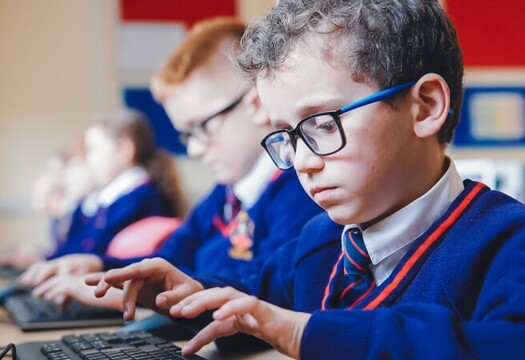Computing
We believe that computing is an important skill for every child, helping them thrive in a digital world. Our curriculum is based on the Teach Computing Curriculum (TCC), developed by the Raspberry Pi Foundation for the National Centre for Computing Education (NCCE). For Key Stage 1 and 2, it offers structured units covering four main areas: Computing Systems and Networks, Programming, Data and Information, and Creating Media. It also introduces key concepts such as algorithms, programming, design and development, online safety, and the impact of technology.
Our aim is for pupils to:
- Understand the key ideas behind computing, including how digital systems work and how to solve problems using algorithms and programming.
- Develop practical skills in programming and using technology to create content.
- Use technology safely, responsibly, and confidently.
- Apply their computing skills in different subjects and everyday situations.
Hands-on learning is a key part of our curriculum. Children experience physical computing using tools such as microcontrollers, floor robots, and data loggers, making learning both practical and creative. Online safety and digital literacy are built into relevant lessons.
Progression is carefully planned throughout primary school. For example, in Year 1, children might create simple digital paintings, control a programmable toy, or sort objects into categories on a computer. By Year 4, they are programming more complex animations, handling data in spreadsheets, and combining text, images, and sound to create digital presentations. By the end of Key Stage 2, pupils can plan, develop, and debug programs, manage information effectively, and use a wide range of digital tools independently to solve problems and express their ideas.
The teaching approach promotes understanding, supports independent learning, and helps children tackle challenges and misconceptions confidently.
Our curriculum also links with other subjects, including mathematics, science, and design & technology, helping pupils use their computing skills in a variety of contexts. By the end of Key Stage 2, children will have the confidence, independence, and problem-solving skills to choose the right digital tools, complete tasks, and share their ideas creatively.
Through this approach, we aim not just to teach computing as a subject, but to help pupils become responsible, confident, and innovative digital citizens, ready to take part in and shape the digital world.
Computing Curriculum MapOnline safety information for parents
